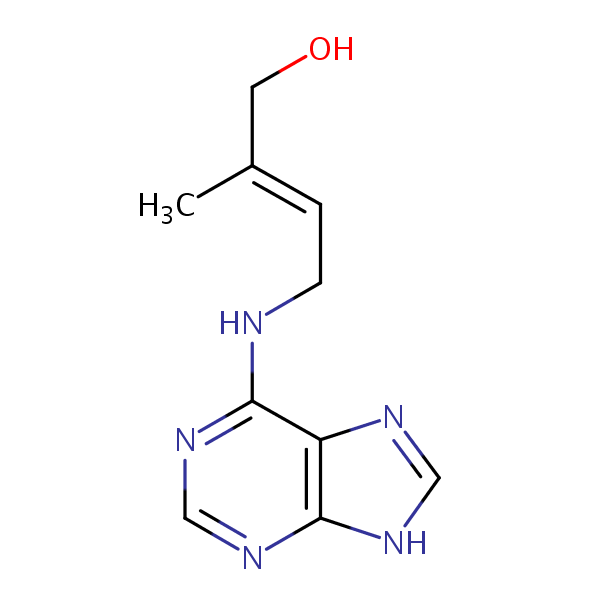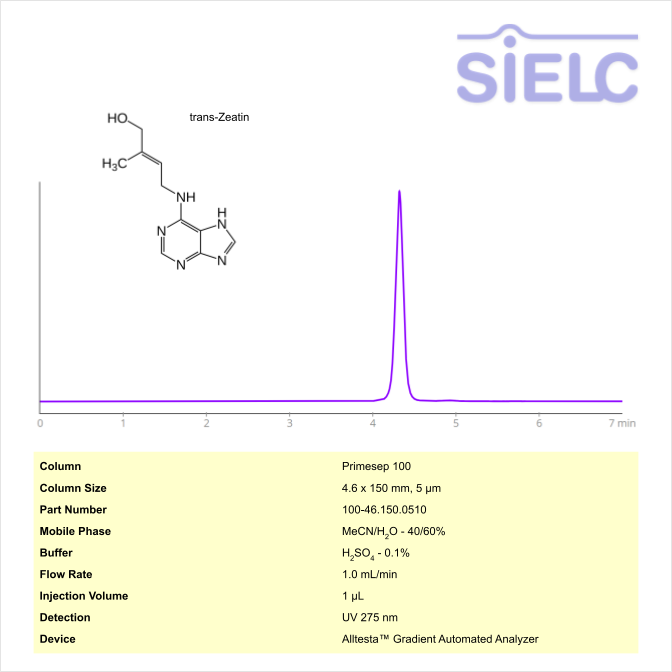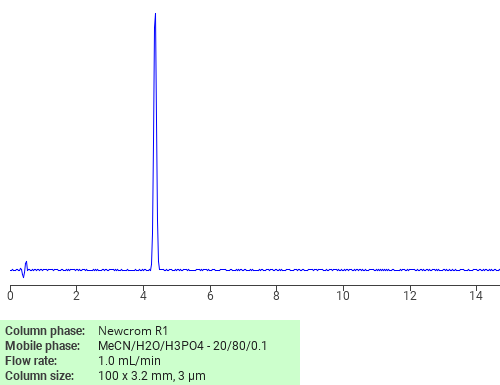| CAS Number | 1637-39-4 |
|---|---|
| Molecular Formula | C10H13N5O |
| Molecular Weight | 219.249 |
| InChI Key | UZKQTCBAMSWPJD-FARCUNLSSA-N |
| LogP | 0.6 |
| Synonyms |
|
Applications:
HPLC Method for Analysis of trans-Zeatin on Primesep 100 Column on Alltesta™
December 17, 2025
HPLC Method for trans-Zeatin on Primesep 100 by SIELC Technologies
High Performance Liquid Chromatography (HPLC) Method for Analysis of trans-Zeatin
trans-Zeatin is a cytokinin derived from adenine with two forms, cis- and trans-isomer. It has the chemical formula C10H13N5O. It promotes callus initiation and fruit set, delays yellowing for vegetables, and causes auxiliary stems to grow. You can find detailed UV spectra of trans-Zeatin and information about its various lambda maxima by visiting the following link.
trans-Zeatin can be retained and analyzed using the Primesep 100 stationary phase column. The analysis utilizes an isocratic method with a simple mobile phase consisting of water and acetonitrile (MeCN) with sulfuric acid as a buffer. Detection is performed using UV.
| Column | Primesep 100, 4.6 x 150 mm, 5 µm, 100 A, dual ended |
| Mobile Phase | MeCN – 40% |
| Buffer | Sulfuric Acid |
| Flow Rate | 1.0 mL/min |
| Detection | UV 275 nm |
| Class of Compounds | Cytokinin |
| Analyzing Compounds | trans-Zeatin |
Application Column
Primesep 100
Column Diameter: 4.6 mm
Column Length: 150 mm
Particle Size: 5 µm
Pore Size: 100 A
Column options: dual ended

HPLC MS Method for the Analysis of Cytokinins: A Phytohormone Class and Brassinazole on Primesep 200 Column
September 11, 2024
High Performance Liquid Chromatography (HPLC) MS Method for Analysis of trans-Zeatin, Kinetin, N6-(Δ2-Isopentenyl)adenine, Thidiazuron, 6-Benzylaminopurine, Brassinazole on Primesep 200 by SIELC Technologies
Separation type: Liquid Chromatography Mixed-mode SIELC Technologies
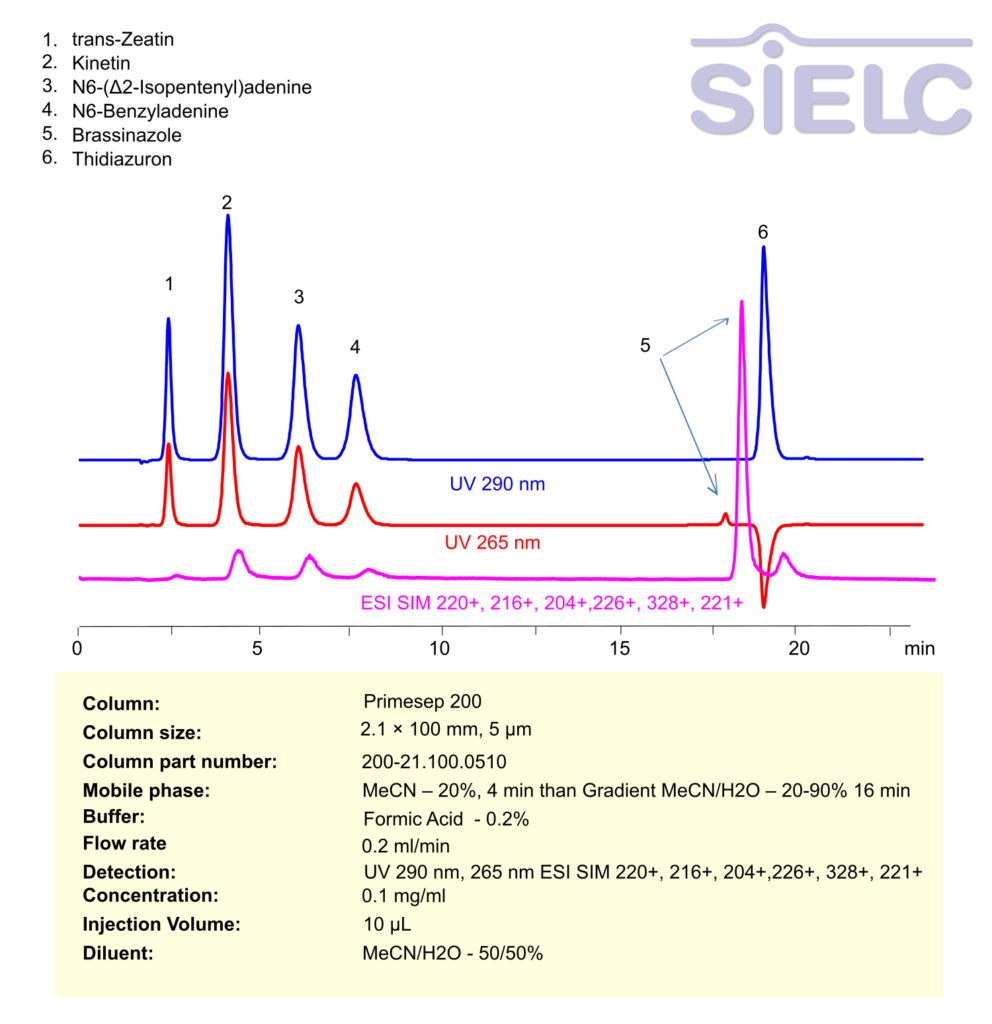
High Performance Liquid Chromatography (HPLC) Method for Analysis of trans-Zeatin, Kinetin, N6-(Δ2-Isopentenyl)adenine, Thidiazuron, 6-Benzylaminopurine, Brassinazole
It looks like you’re listing a series of compounds, most of which are cytokinins or related plant hormones. Here’s a brief overview and classification for the compounds you mentioned:
trans-Zeatin:
- A type of cytokinin.
- Naturally occurring in plants and plays a key role in promoting cell division and growth.
Kinetin:
- A synthetic cytokinin.
- Used in plant tissue culture to stimulate cell division.
N6-(Δ2-Isopentenyl)adenine (iP):
- Another cytokinin.
- Found in plants and is involved in regulating growth, development, and differentiation.
N6-Benzyladenine (BA):
- A synthetic cytokinin.
- Commonly used in agricultural practices to enhance plant growth and delay senescence.
Brassinazole:
- Not a cytokinin, but a brassinosteroid biosynthesis inhibitor.
- Used to study the role of brassinosteroids (another class of phytohormones) in plants.
Thidiazuron (TDZ):
- A phenylurea derivative that acts as a cytokinin-like compound.
- Widely used in plant tissue culture to promote shoot regeneration and induce cytokinin-like effects.
trans-Zeatin, Kinetin, N6-(Δ2-Isopentenyl)adenine, Thidiazuron, 6-Benzylaminopurine, Brassinazole can be retained, separated and analyzed using a Primesep 200 mixed-mode stationary phase column. The analysis employs an isocratic method with a simple mobile phase comprising water, acetonitrile (MeCN), and formic acid as a buffer. This method allows for detection using UV 290, 265 nm.
You can find detailed UV spectra of trans-Zeatin, Kinetin, N6-(Δ2-Isopentenyl)adenine, Thidiazuron, 6-Benzylaminopurine, Brassinazole and information about its various lambda maxima by visiting the following link.
| Column | Primesep 200, 2.1 x 100 mm, 5 µm, 100 A, dual ended |
| Mobile Phase | MeCN – 20%, 4 min than Gradient MeCN/H2O – 20-90% 16 min |
| Buffer | Formic Acid -0.2% |
| Flow Rate | 0.2 mg/ml |
| Detection | UV 290 nm, 265 nm ESI SIM 220+, 216+, 204+,226+, 328+, 221+ |
| Class of Compounds | Phytohormone |
| Analyzing Compounds | trans-Zeatin, Kinetin, N6-(Δ2-Isopentenyl)adenine, Thidiazuron, 6-Benzylaminopurine, Brassinazole |
Application Column
Primesep 200
Column Diameter: 2.1 mm
Column Length: 100 mm
Particle Size: 5 µm
Pore Size: 100 A
Column options: dual ended
Brassinazole
Kinetin
N6-(Δ2-Isopentenyl)adenine
Thidiazuron
trans-Zeatin
LC MS Detection

UV-Vis Spectrum of trans-Zeatin
September 9, 2024
If you are looking for optimized HPLC method to analyze trans-Zeatin check our HPLC Applications library
For optimal results in HPLC analysis, it is recommended to measure absorbance at a wavelength that matches the absorption maximum of the compound(s) being analyzed. The UV spectrum shown can assist in selecting an appropriate wavelength for your analysis. Please note that certain mobile phases and buffers may block wavelengths below 230 nm, rendering absorbance measurement at these wavelengths ineffective. If detection below 230 nm is required, it is recommended to use acetonitrile and water as low UV-transparent mobile phases, with phosphoric acid and its salts, sulfuric acid, and TFA as buffers.
For some compounds, the UV-Vis Spectrum is affected by the pH of the mobile phase. The spectra presented here are measured with an acidic mobile phase that has a pH of 3 or lower.

HPLC Method for Analysis of trans-Zeatin on Primesep 100 Column
September 9, 2024
High Performance Liquid Chromatography (HPLC) MS Method for Analysis of trans-Zeatin on Primesep 100 by SIELC Technologies
Separation type:Liquid Chromatography Mixed-mode SIELC Technologies
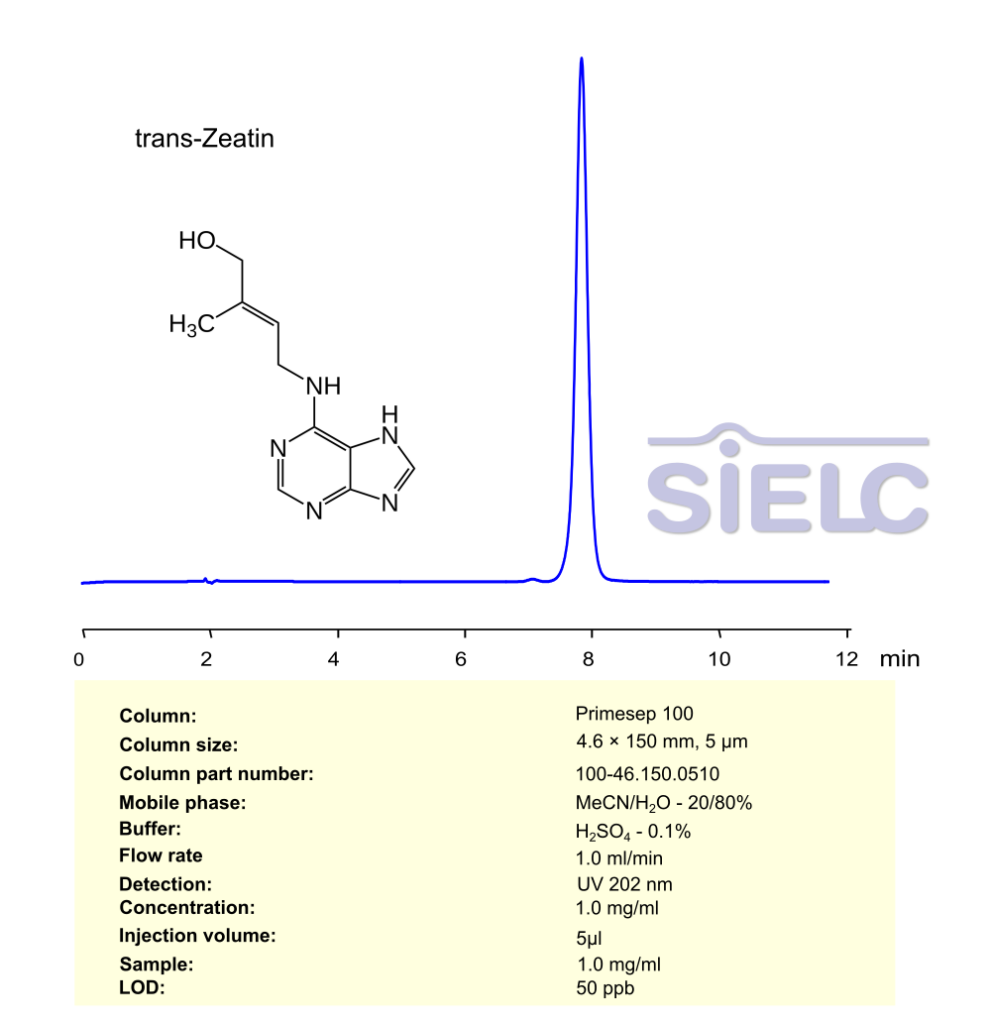
High Performance Liquid Chromatography (HPLC) Method for Analysis of trans-Zeatin
trans-Zeatin is a type of cytokinin, a class of plant hormones that promote cell division and growth, delay aging, and play a crucial role in plant development. It is one of the most active and common forms of zeatin found in plants.
It is often involved in various physiological processes, including seed germination, leaf formation, and root and shoot differentiation.
trans-Zeatin can be retained, separated and analyzed using a Primesep 100 column. The analysis employs an isocratic method with a simple mobile phase comprising water, acetonitrile (MeCN) and Sulfuric acid as a buffer. This method allows for detection using Vis 200 nm.
You can find detailed UV spectra of trans-Zeatin and information about its various lambda maxima by visiting the following link.
| Column | Primesep 100, 4.6 x 150 mm, 5 µm, 100 A, dual ended |
| Mobile Phase | MeCN/H2O- 20/80% |
| Buffer | H2SO4 – 0.1% |
| Flow Rate | 1.0 ml/min |
| Detection | UV 202 nm |
| Sample | 1 mg/ml |
| Solvent | MeCN/H2O- 20/80% |
| LOD | 50 ppb |
| Class of Compounds | Cytokinin, Plant hormones |
| Analyzing Compounds | trans-Zeatin |
Application Column
Primesep 100
Column Diameter: 4.6 mm
Column Length: 150 mm
Particle Size: 5 µm
Pore Size: 100 A
Column options: dual ended

Separation of trans-Zeatin on Newcrom R1 HPLC column
May 16, 2018
trans-Zeatin can be analyzed by this reverse phase (RP) HPLC method with simple conditions. The mobile phase contains an acetonitrile (MeCN), water, and phosphoric acid. For Mass-Spec (MS) compatible applications the phosphoric acid needs to be replaced with formic acid. Smaller 3 µm particles columns available for fast UPLC applications. This liquid chromatography method is scalable and can be used for isolation impurities in preparative separation. It also suitable for pharmacokinetics.
Application Column
Newcrom R1
The Newcrom columns are a family of reverse-phase-based columns. Newcrom A, AH, B, and BH are all mixed-mode columns with either positive or negative ion-pairing groups attached to either short (25 Å) or long (100 Å) ligand chains. Newcrom R1 is a special reverse-phase column with low silanol activity.
Select options